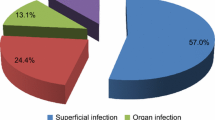Abstract
Background
Institutions are now incentivized to decrease rates of preventable readmissions. The purpose of this study was to examine readmissions following open ventral hernia repair (VHR), to ultimately create a model to preoperatively identify high-risk patients.
Study Design
Utilizing the 2011 and 2012 ACS-NSQIP datasets, patients undergoing open VHR were identified by CPT codes. Patients who were readmitted in 2011 within 30 days of the procedure were compared to those who were not with regard to preoperative and operative characteristics. A bootstrap analysis was performed to identify internally validated risk factors to be included in the final logistic regression, which was utilized to create a weighted model to predict the risk of readmission. This model was then validated with VHR patients in 2012.
Results
Overall, 10,745 patients were included for model generation. Of these, 850 (7.9 %) patients were readmitted within 30 days. The final bootstrap analysis demonstrated that active smoking, ASA ≥ 3, a history of bleeding disorder or anemia, long operative time, inpatient status, and concurrent panniculectomy were all independently associated with readmission following ventral hernia repair. Significant variables were assigned a weighted score, ranging from 1 to 3. Each patient was then placed into one of four cohorts according to their summed score. The internally validated model [Hernia Readmission Risk (HERR) Score] demonstrated that risk increased in a linear fashion, with the highest risk cohort having a 21 % risk of 30-day readmission.
Conclusions
Perioperative predictors of readmission following VHR include smoking, ASA score, operative magnitude, concurrent panniculectomy, and preoperative anemia and bleeding disorders. The presented model based on these factors can aid in perioperative risk stratification for readmission.

Similar content being viewed by others
References
HIMSS: reducing readmissions—top ways information technology can help (Internet) (cited 2013 September 30). http://www.himss.org/files/HIMSSorg/content/files/ControlReadmissionsTechnology.pdf
Readmissions reduction program: centers for medicare and medicaid services (Internet) (cited 2013 September 28). http://www.cms.gov/Medicare/Medicare-Fee-for-Service-Payment/AcuteInpatientPPS/Readmissions-Reduction-Program.html
Rau J (2012) Medicare to Penalize 2,217 hospitals for excess readmissions. Kaiser Health News. [Internet] [cited 2013 September 30]. http://www.kaiserhealthnews.org/stories/2012/august/13/medicare-hospitals-readmissions-penalties.aspx
Caramenico A (2013) “Medicare slaps two-thirds of US hospitals with readmission penalties.” Fierce Healthcare. http://www.fiercehealthcare.com/story/medicare-slaps-two-thirds-us-hospitals-readmission-penalties/2013-08-05. Accessed 4 Nov 2013
Gordon D “Working to avoid next CMS penalties: surgery readmissions”. Curaspan Health Group. http://connect.curaspan.com/articles/working-avoid-next-cms-penalties-surgery-readmissions. Accessed 4 Nov 2013
Kassin MT, Owen RM, Perez SD et al (2012) Risk factors for 30-day hospital readmission among general surgery patients. J Am Coll Surg 215(3):322–330
Tsai TC, Joynt KE, Orav EJ et al (2013) Variation in surgical-readmission rates and quality of hospital care. N Engl J Med 369:1134–1142
Lucas DJ, Haider A, Haut E et al (2013) Assessing readmission after general, vascular, and thoracic surgery using ACS-NSQIP. Ann Surg 258(3):430–439
Nguyen MT, Li LT, Hicks SC, et al. (2013) Readmission following open ventral hernia repair: incidence, indications, and predictors. Am J Surg 206(6):942–948 (discussion 948–9)
Blatnik JA, Harth KC, Aeder MI et al (2011) Thirty-day readmission after ventral hernia repair: predictable or preventable? Surg Endosc 25(5):1446–1451
Helgstrand F, Rosenberg J, Kehlet H et al (2011) Nationwide analysis of prolonged hospital stay and readmission after elective ventral hernia repair. Dan Med Bull 58(10):A4322
Helgstrand F, Rosenberg J, Kehlet H et al (2013) Nationwide prospective study of outcomes after elective incisional hernia repair. J Am Coll Surg 216(2):217–228
ACS-NSQIP. American College of Surgeon National Surgical Quality Improvement Program. http://site.acsnsqip.org/participant-usedata-file/. Accessed 1 December 2012
Don B, Kaysen G (2004) Serum albumin: relationship to inflammation and nutrition. Semin Dial 17:432–437
McLean E, Cogswell M, Egli I, Wojdyla D, de Benoist B (2009) Worldwide prevalence of anaemia, WHO vitamin and mineral nutrition information system, 1993–2005. Public Health Nutr 12:444–454
Garrett J (2000) SWBOOT: Stata module to bootstrap linear or logistic regression models. http://econpapers.repec.org/software/bocbocode/s415601.htm. Accessed 31 Oct 2013
Steyerberg E, Harrell FJ, Borsboom G, Eijkemans M, Vergouwe Y, Habbema J (2001) Internal validation of predictive models: efficiency of some procedures for logistic regression analysis. J Clin Epidemiol 54:774–781
Fischer JP, Wes AM, Nelson JA et al (2013) Factors associated with readmission following plastic surgery: a review of 10,669 procedures from the 2011 American College of Surgeons National Surgical Quality Improvement Program data set. Plast Reconstr Surg 132(3):666–674
Nelson JA, Fischer JP, Chung CU, et al. (2014) Risk of readmission following immediate breast reconstruction: results from the 2011 ACS-NSQIP datasets. Plast Reconstr Surg 134(2):193e–201e
Harth KC, Blatnik JA, Rosen MJ (2011) Optimum repair for massive ventral hernias in the morbidly obese patient—is panniculectomy helpful? Am J Surg 201(3):396–400
Kim BD, Ver Halen JP, Lim S, et al (2014) Predictors of 61 unplanned readmission cases in microvascular free tissue transfer patients: multi-institutional analysis of 774 patients. Microsurgery. doi:10.1002/micr.22230 [Epub ahead of print]
Jack BW, Chetty VK, Anthony D et al (2009) A reengineered hospital discharge program to decrease rehospitalization. Ann Intern Med 150(3):178–187
Jencks SF, Williams MV, Coleman EA (2009) Rehospitalizations among patients in the Medicare fee-for-service program. N Engl J Med 360(14):1418–1428
Acknowledgments
This particular research received no internal or external grant funding.
Conflict of interest
The authors report no relevant financial disclosures related to this current work.
Ethical approval
De-identified patient information is freely available to all institutional members who comply with the American College of Surgeons National Surgical Quality Improvement Program (ACS-NSQIP) Data Use Agreement. The Data Use Agreement implements the protections afforded by the Health Insurance Portability and Accountability Act of 1996.
IRB approval
This study received IRB exemption.
Author information
Authors and Affiliations
Corresponding author
Additional information
The ACS-NSQIP and the hospitals participating in the ACS-NSQIP are the source of the data used herein; they have not verified and are not responsible for the statistical validity of the data analysis or the conclusions derived by the authors of this study.
Electronic supplementary material
Below is the link to the electronic supplementary material.
Rights and permissions
About this article
Cite this article
Nelson, J.A., Fischer, J., Chung, C.C. et al. Readmission following ventral hernia repair: a model derived from the ACS-NSQIP datasets. Hernia 19, 125–133 (2015). https://doi.org/10.1007/s10029-014-1329-2
Received:
Accepted:
Published:
Issue Date:
DOI: https://doi.org/10.1007/s10029-014-1329-2




